Design, Simulation, and Experiment of an LTCC-Based Xenon Micro Flow Control Device for an Electric Propulsion System
Abstract
:1. Introduction
2. Design and Fabrication
3. Modelling and Simulations
4. Experimental Setup
5. Results and Discussions
5.1. Validation of the Mathematical Model
5.2. Influence of Structural Parameters
6. Conclusions
Author Contributions
Funding
Conflicts of Interest
References
- Jarrige, J.; Elias, P.Q.; Cannat, F.; Packan, D. Performance comparision of an ECR plasma thruster using Argon and Xenon as propellant gas. In Proceedings of the 33rd International Electric Propulsion Conference, Washington, DC, USA, 6–10 October 2013. [Google Scholar]
- Nakles, M.R.; Hargus, W.A.; Delgado, J.J.; Corey, R.L. A performance comparison of Xenon and Krypton propellant on an SPT-100 hall thruster. In Proceedings of the 32nd International Electric Propulsion Conference, Wiesbaden, Germany, 11–15 September 2011. [Google Scholar]
- Dankanich, J.W.; Cardin, J.; Dien, A.; Kamhawi, H.; Netwall, C.J.; Osborn, M. Advanced xenon feeding system (AXFS) development and hot-fire testing. In Proceedings of the 45th AIAA/ASME/SAE/ASEE Joint Propulsion Conference and Exhibit, Denver, CO, USA, 2–5 August 2009. [Google Scholar]
- Koppel, C.R.; Marchandise, F.; Estublier, D. Robust pressure regulation system for the SMART-1 electric propulsion sub-system. In Proceedings of the 40th AIAA/ASME/SAE/ASEE Joint Propulsion Conference and Exhibit, Fort Lauderdale, FL, USA, 11–14 July 2004. [Google Scholar]
- Ganapathi, G.B.; Engelbrecht, C.S. Post-launch performance characterization of the xenon system on Deep Space One. In Proceedings of the 35th AIAA/ASME/SAE/ASEE Joint Propulsion Conference and Exhibit, Los Angeles, CA, USA, 20–24 June 1999. [Google Scholar]
- Ganapathi, G.B.; Engelbrecht, C.S. Performance of the xenon feed system on Deep Space One. J. Spacecr. Rocket. 2000, 37, 392–398. [Google Scholar] [CrossRef]
- Brophy, J.R.; Ganapathi, G.B.; Garner, C.E.; Lo, J.; Marcucci, M.G.; Nakazono, B. Status of the Dawn ion propulsion system. In Proceedings of the 40th AIAA/ASME/SAE/ASEE Joint Propulsion Conference and Exhibit, Fort Lauderdale, FL, USA, 11–14 July 2004. [Google Scholar]
- Tan, P.; Pang, G.Q.; Tang, H.P.; Chen, J.M.; Wang, Q.B.; Kang, X.T.; Chi, Y.D. Microflow controller in hall electric propulsion system. Funct. Mater. 2010, 3, 385–392. [Google Scholar]
- Dyer, K.; Dien, A.; Nishida, E.; Kasai, Y. A xenon propellant management sub-unit for ion propulsion. In Proceedings of the 35th AIAA/ASME/SAE/ASEE Joint Propulsion Conference and Exhibit, Los Angeles, CA, USA, 20–24 June 1999. [Google Scholar]
- Toki, K.; Kuninaka, H.; Nishiyama, K. Flight readiness of the microwave ion engine system for MUSES-C mission. In Proceedings of the 28th International Electric Propulsion Conference, Toulouse, France, 17–21 March 2003. [Google Scholar]
- Couceiro, P.; Pedro, S.G.; Alonso, J. All-ceramic analytical microsystems with monolithically integrated optical detection microflow cells. Microfluid. Nanofluid. 2015, 18, 649–656. [Google Scholar] [CrossRef]
- Vasudev, A.; Kaushik, A.; Tomizawa, Y.; Norena, N.; Bhansali, S. An LTCC-based microfluidic system for label-free, electrochemical detection of cortisol. Sens. Actuators B Chem. 2013, 182, 139–146. [Google Scholar] [CrossRef]
- Golonka, L.J.; Zawada, T.; Radojewski, J.; Roguszczak, H.; Stefanow, M. LTCC microfluidic system. Int. J. Appl. Ceram. Technol. 2006, 3, 150–156. [Google Scholar] [CrossRef]
- Gomez, H.C.; Cardoso, R.M.; Schianti, J.N.; Oliveria, A.M.; Gongora-Rubio, M.R. Fab on a package: LTCC microfluidic devices applied to chemical process miniaturization. Micromachines 2018, 9, 285. [Google Scholar] [CrossRef] [PubMed]
- Vasudev, A.; Kaushik, A.; Jones, K.; Bhansali, S. Prospects of low temperature co-fired ceramic (LTCC) based microfluidic systems for point-of-care biosensing and environmental sensing. Microfluid. Nanofluid. 2013, 14, 683–702. [Google Scholar] [CrossRef]
- Malecha, K.; Dawgul, M.; Pijanowska, D.G.; Golonka, L.J. LTCC Microfluidic Systems for Biochemical Diagnosis. Biocybern. Biomed. Eng. 2011, 31, 31–41. [Google Scholar]
- Bruschi, P.; Diligenti, A.; Piotto, M. Micromachined gas flow regulator for ion propulsion systems. IEEE Trans. Aerosp. Electron. Sys. 2002, 38, 982–988. [Google Scholar] [CrossRef]
- Jia, G.Z.; Wang, X.Y.; Wu, G.M. Study on extra high pressure and large flowrate pneumatic on-off valve. Chin. J. Mech. Eng. 2004, 40, 77–81. [Google Scholar] [CrossRef]
- Jia, G.Z.; Wang, X.Y.; Wu, G.M.; Tao, G.L.; Chen, Y. Reserch on pricinple and property of classification control pressure reduction by expander in high pressure pneumatic system. Chin. J. Mech. Eng. 2005, 41, 210–214. [Google Scholar] [CrossRef]
- Qian, J.Y.; Li, X.J.; Wu, Z.; Jin, Z.J.; Sunden, B. A comprehensive review on liquid–liquid two-phase flow in microchannel: Flow pattern and mass transfer. Microfluid. Nanofluid. 2019, 23, 116. [Google Scholar] [CrossRef]
- Qian, J.Y.; Li, X.J.; Wu, Z.; Jin, Z.J.; Zhang, J.H.; Sunden, B. Slug formation analysis of liquid-liquid two-phase flow in T-junction microchannels. J. Therm. Sci. Eng. Appl. 2019, 11, 051017. [Google Scholar] [CrossRef]
- Lu, L.; Xie, S.H.; Yin, Y.B.; Ryu, S. Experimental and numerical analysis on the surge instability characteristics of the vortex flow produced large vapor cavity in u-shape notch spool valve. Int. J. Heat Mass Tran. 2020, 146, 118882. [Google Scholar] [CrossRef]
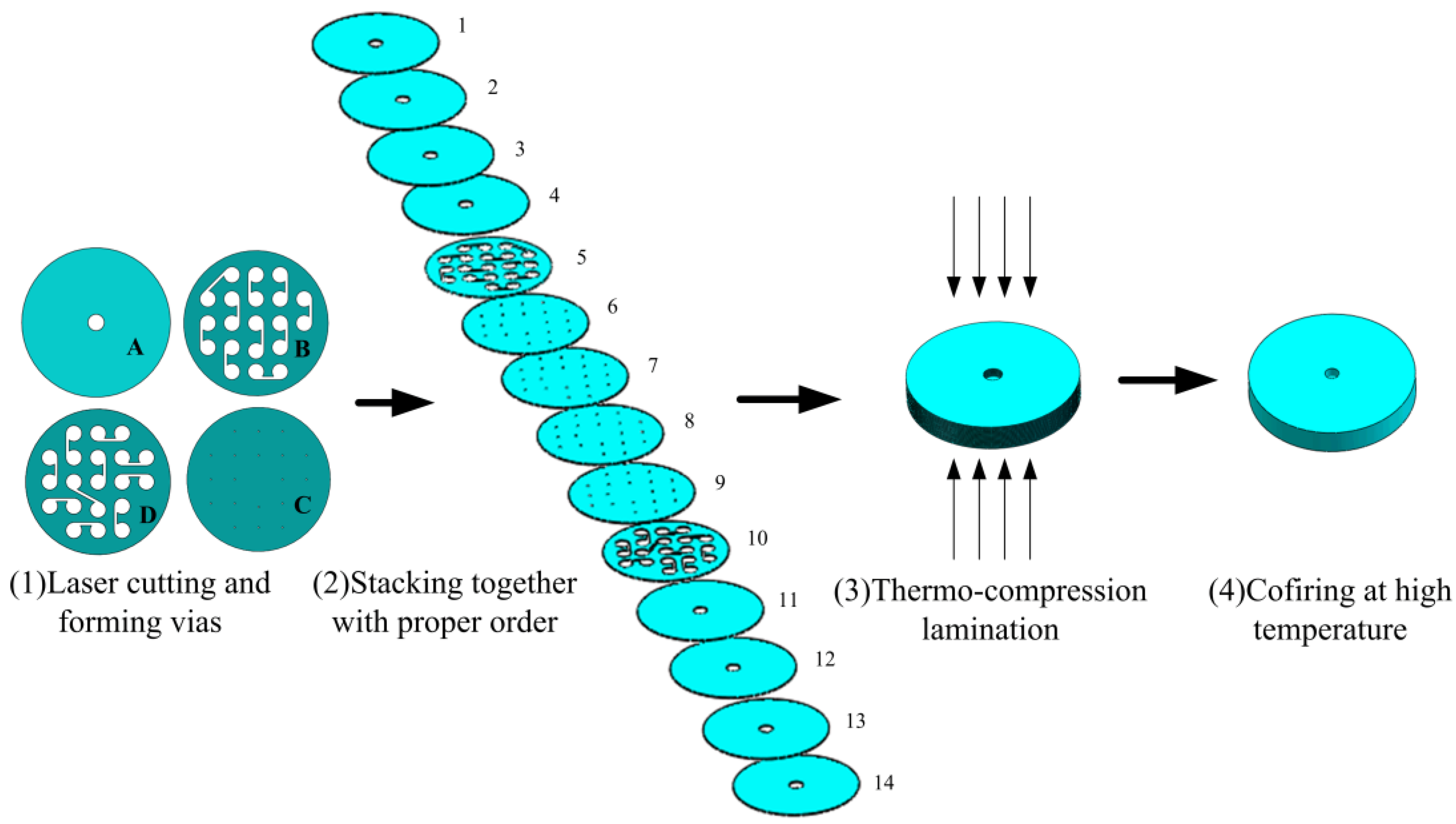

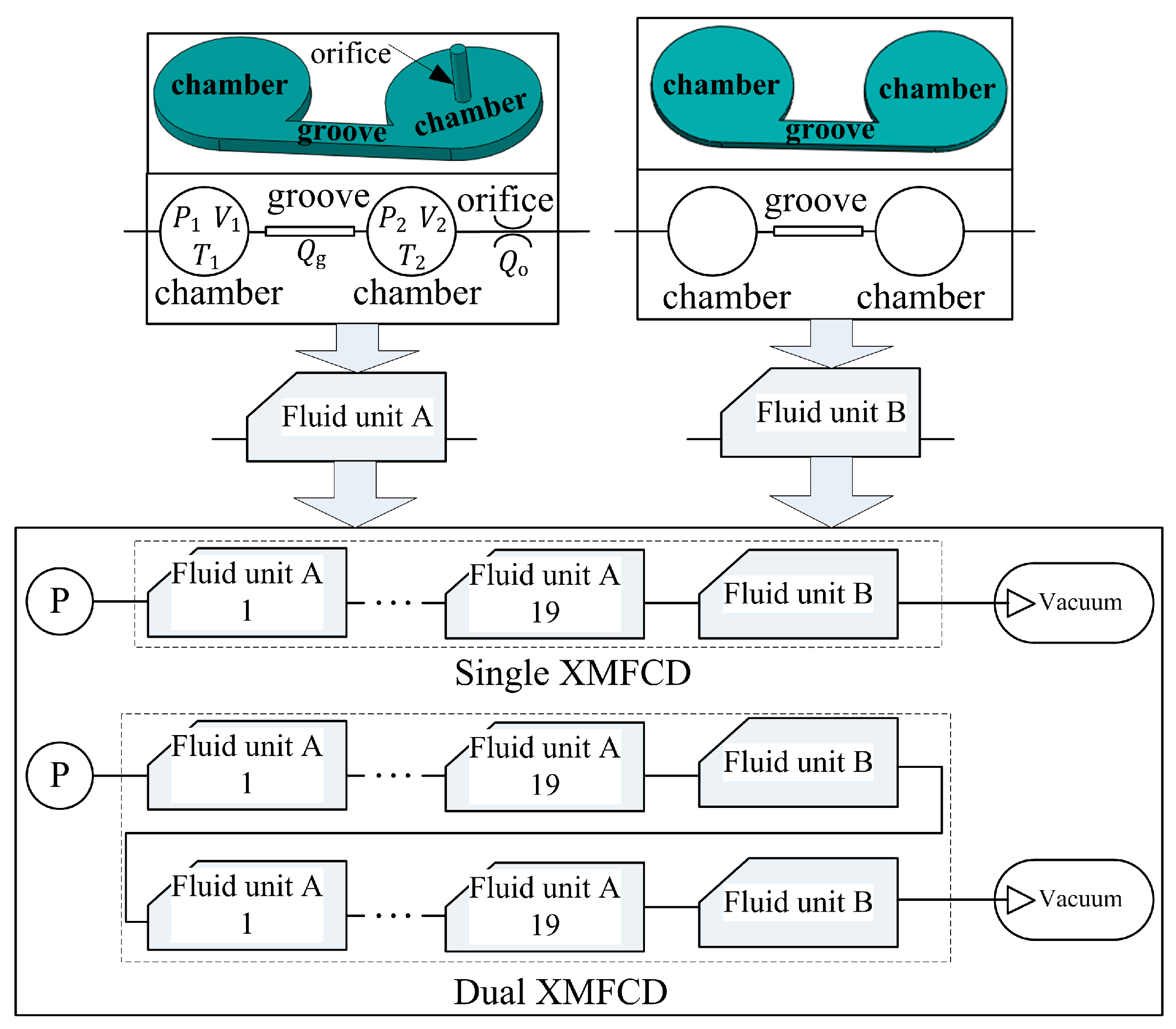
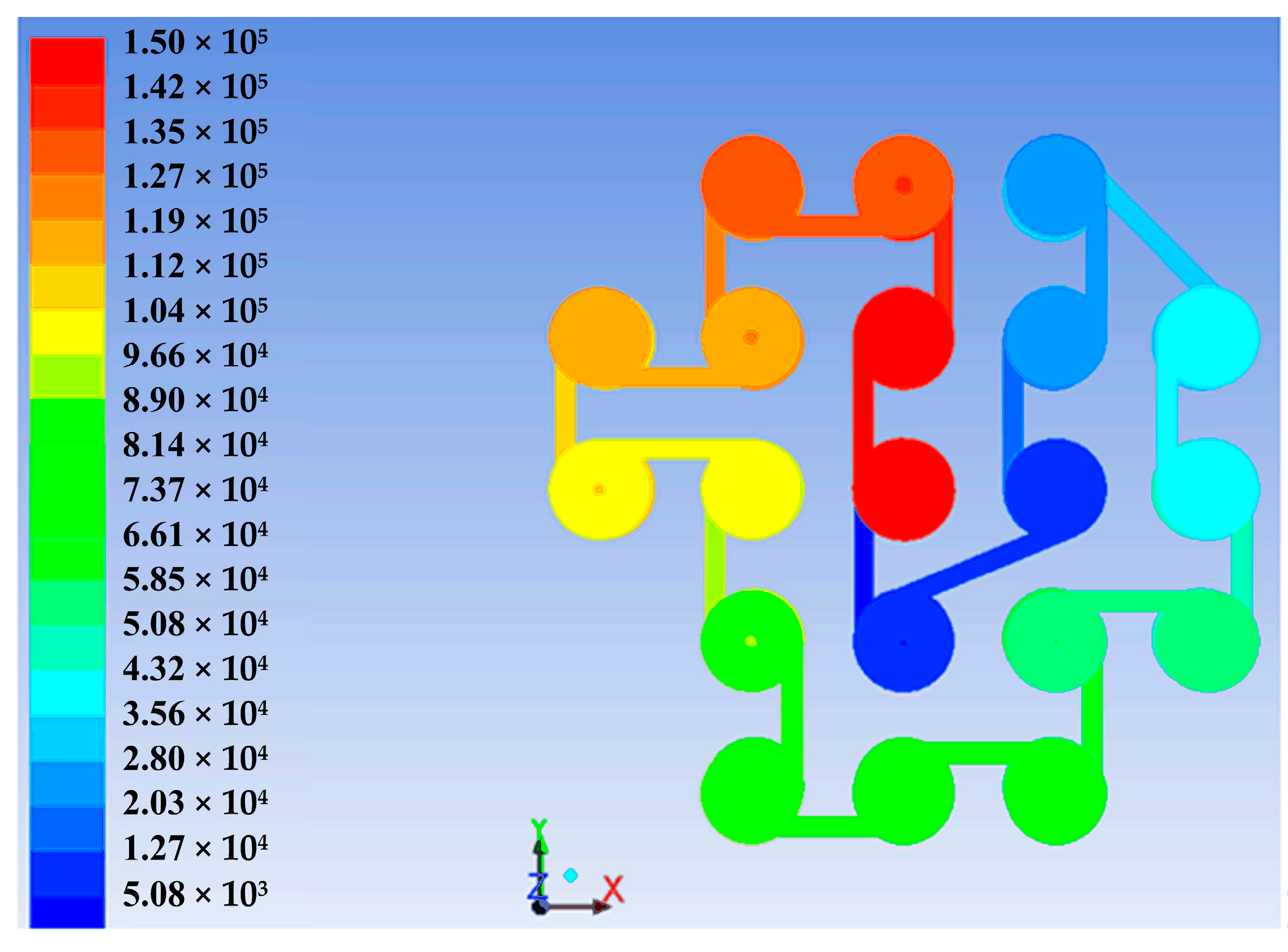
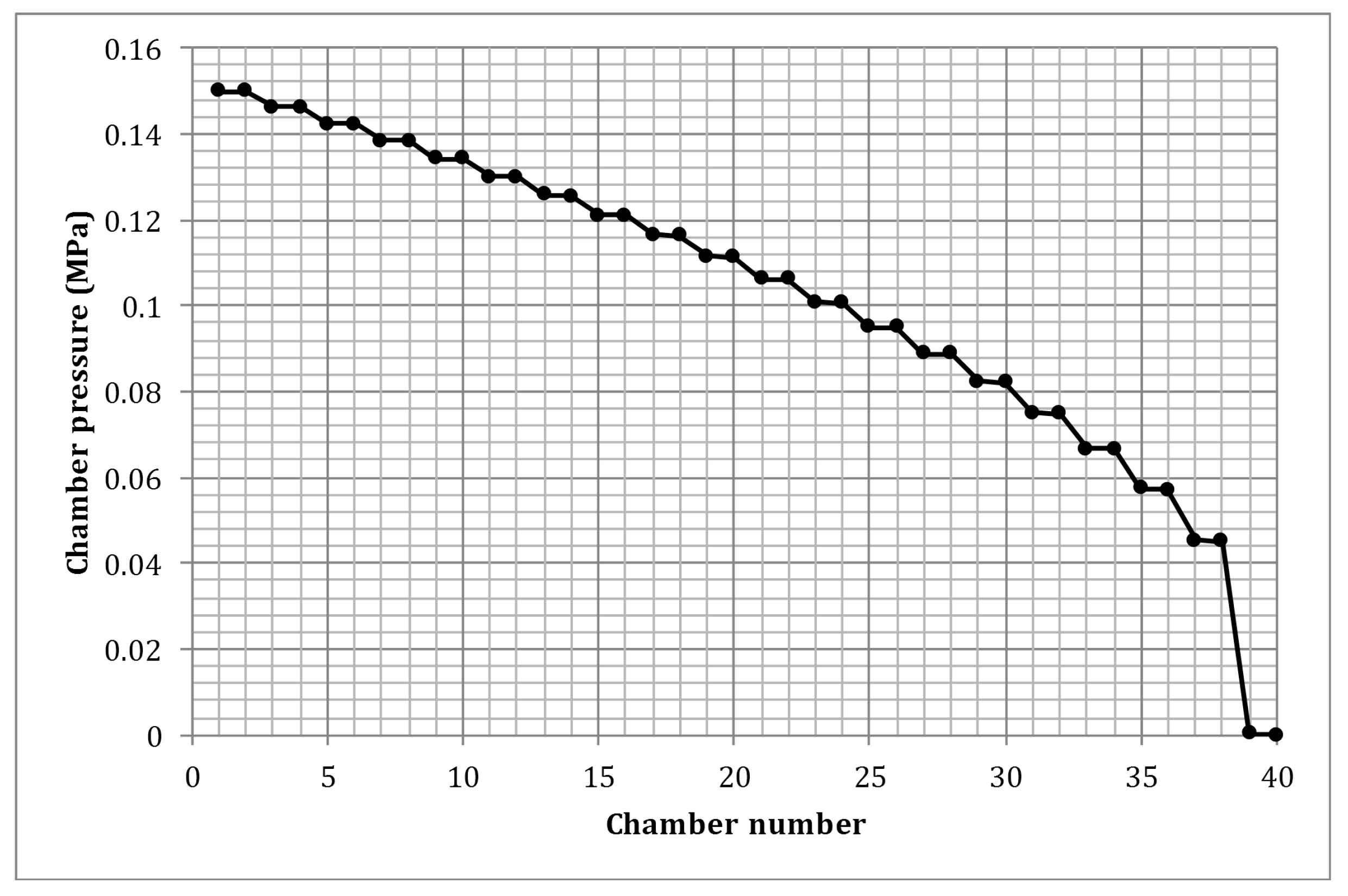
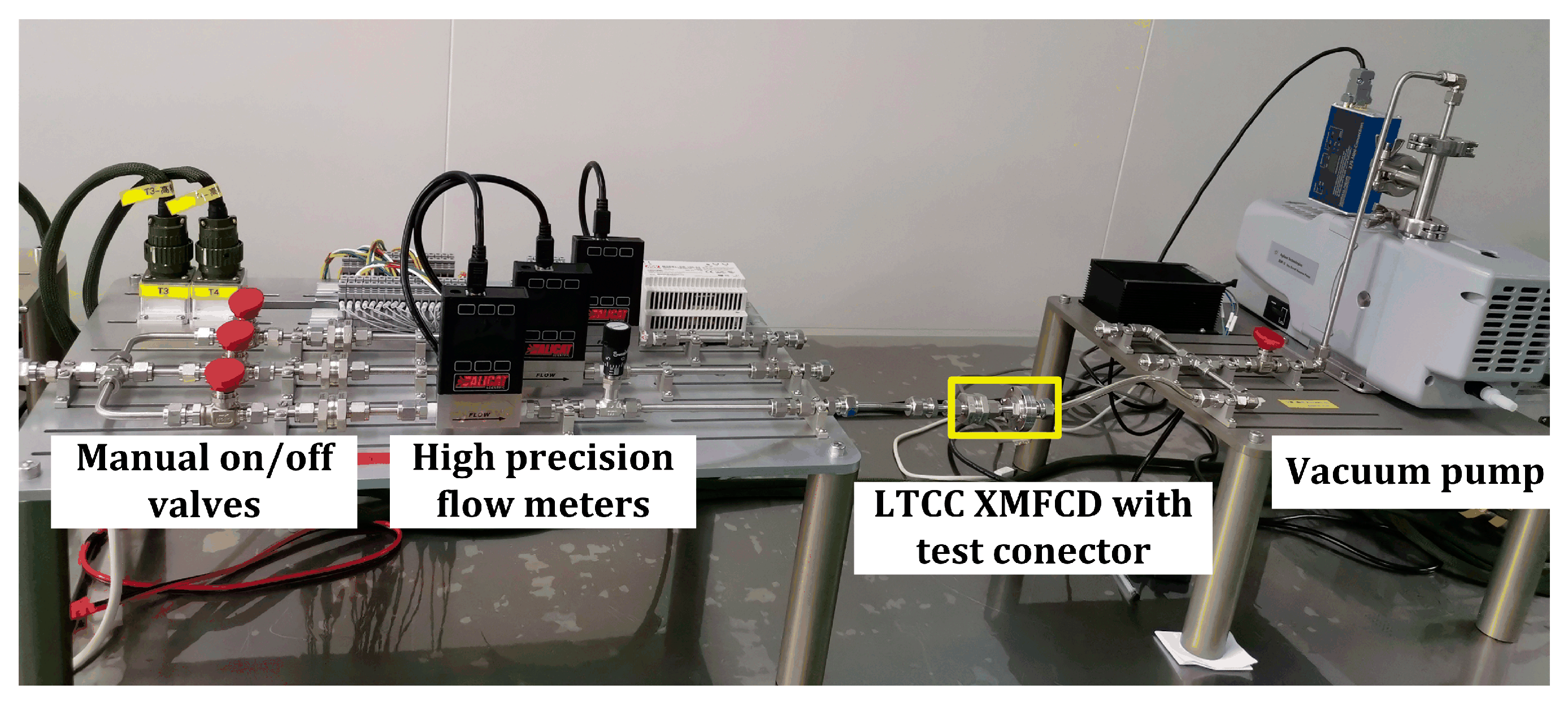
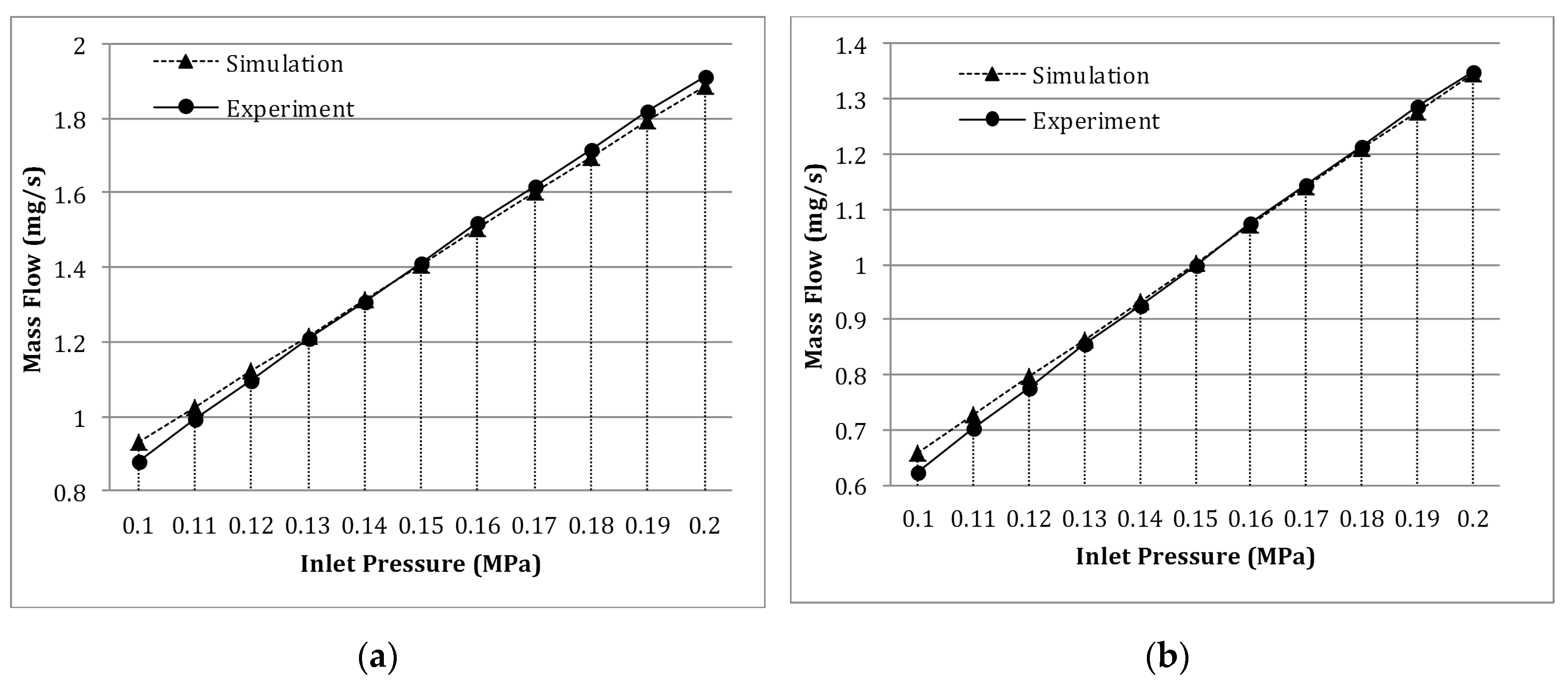
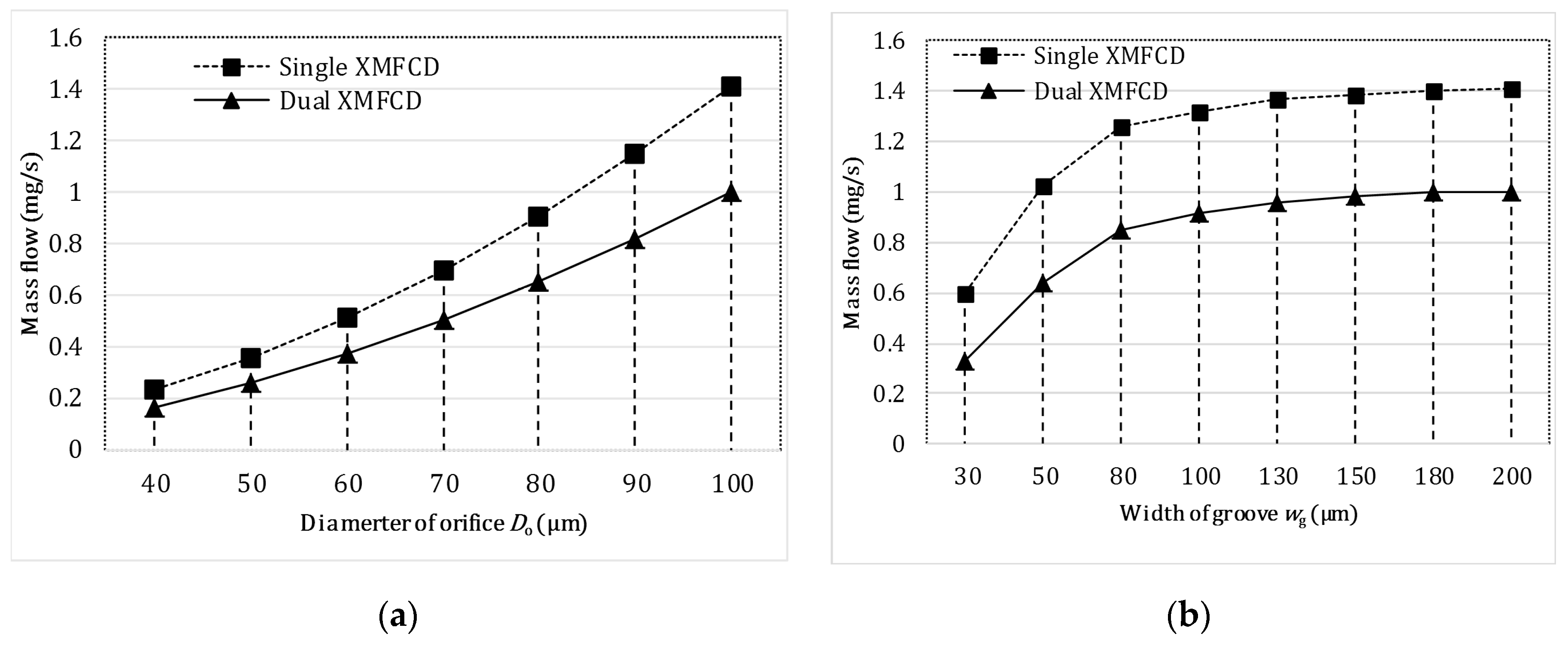
| Parameters | Values |
|---|---|
| ρ | 5.89 kg/m3 |
| μ | 2.11 × 10−5 Pa·s |
| R | 63.29 J/(kg·K) |
| k | 1.67 |
| wg | 0.2 mm |
| dg | 0.1 mm |
| lg | 1 mm |
| Cd | 0.7 |
| Do | 0.1 mm |
| Dc | 1 mm |
| Inlet Pressure (MPa) | Experimental Mass Flow (mg/s) | Simulated Mass Flow (mg/s) | Error (mg/s) | |
|---|---|---|---|---|
| Single XMFCD | 0.1 | 0.880 | 0.92900 | −0.04900 |
| 0.11 | 0.993 | 1.02488 | −0.03188 | |
| 0.12 | 1.095 | 1.12077 | −0.02577 | |
| 0.13 | 1.210 | 1.21667 | −0.00667 | |
| 0.14 | 1.310 | 1.31256 | −0.00256 | |
| 0.15 | 1.413 | 1.40847 | 0.00453 | |
| 0.16 | 1.520 | 1.50437 | 0.01563 | |
| 0.17 | 1.619 | 1.60027 | 0.01873 | |
| 0.18 | 1.719 | 1.69618 | 0.02282 | |
| 0.19 | 1.817 | 1.79209 | 0.02491 | |
| 0.20 | 1.910 | 1.88800 | 0.02200 | |
| Dual XMFCD | 0.1 | 0.622 | 0.65789 | −0.03589 |
| 0.11 | 0.702 | 0.72673 | −0.02473 | |
| 0.12 | 0.775 | 0.79558 | −0.02058 | |
| 0.13 | 0.856 | 0.86445 | −0.00845 | |
| 0.14 | 0.927 | 0.93331 | −0.00631 | |
| 0.15 | 0.999 | 1.00218 | −0.00318 | |
| 0.16 | 1.075 | 1.07106 | 0.00394 | |
| 0.17 | 1.145 | 1.13994 | 0.00506 | |
| 0.18 | 1.215 | 1.20882 | 0.00618 | |
| 0.19 | 1.285 | 1.27771 | 0.00729 | |
| 0.20 | 1.351 | 1.34659 | 0.00441 |
| Parameters | Value (µm) | Mass Flow Q1 of Single XMFCD (mg/s) | Mass Flow Q2 of Dual XMFCD (mg/s) | Q1/Q2 |
|---|---|---|---|---|
| Do | 40 | 0.23 | 0.165 | 1.393939 |
| 50 | 0.358 | 0.256 | 1.398438 | |
| 60 | 0.514 | 0.368 | 1.396739 | |
| 70 | 0.698 | 0.499 | 1.398798 | |
| 80 | 0.908 | 0.649 | 1.399076 | |
| 90 | 1.145 | 0.817 | 1.401469 | |
| 100 | 1.41 | 1 | 1.41 | |
| wg | 30 | 0.5976 | 0.3289 | 1.816966 |
| 50 | 1.021 | 0.637 | 1.602826 | |
| 80 | 1.258 | 0.852 | 1.476526 | |
| 100 | 1.321 | 0.914 | 1.445295 | |
| 130 | 1.368 | 0.961 | 1.423517 | |
| 150 | 1.385 | 0.978 | 1.416155 | |
| 180 | 1.401 | 0.995 | 1.40804 | |
| 200 | 1.41 | 1 | 1.41 |
© 2019 by the authors. Licensee MDPI, Basel, Switzerland. This article is an open access article distributed under the terms and conditions of the Creative Commons Attribution (CC BY) license (http://creativecommons.org/licenses/by/4.0/).
Share and Cite
Guan, C.-B.; Shen, Y.; Yao, Z.-P.; Wang, Z.-L.; Zhang, M.-J.; Nan, K.; Hui, H.-H. Design, Simulation, and Experiment of an LTCC-Based Xenon Micro Flow Control Device for an Electric Propulsion System. Processes 2019, 7, 862. https://doi.org/10.3390/pr7110862
Guan C-B, Shen Y, Yao Z-P, Wang Z-L, Zhang M-J, Nan K, Hui H-H. Design, Simulation, and Experiment of an LTCC-Based Xenon Micro Flow Control Device for an Electric Propulsion System. Processes. 2019; 7(11):862. https://doi.org/10.3390/pr7110862
Chicago/Turabian StyleGuan, Chang-Bin, Yan Shen, Zhao-Pu Yao, Zhao-Li Wang, Mei-Jie Zhang, Ke Nan, and Huan-Huan Hui. 2019. "Design, Simulation, and Experiment of an LTCC-Based Xenon Micro Flow Control Device for an Electric Propulsion System" Processes 7, no. 11: 862. https://doi.org/10.3390/pr7110862
APA StyleGuan, C.-B., Shen, Y., Yao, Z.-P., Wang, Z.-L., Zhang, M.-J., Nan, K., & Hui, H.-H. (2019). Design, Simulation, and Experiment of an LTCC-Based Xenon Micro Flow Control Device for an Electric Propulsion System. Processes, 7(11), 862. https://doi.org/10.3390/pr7110862




